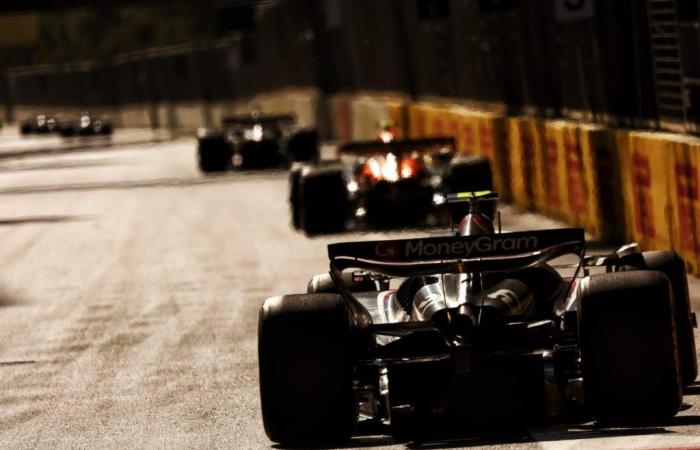Toyota is very keen that its new Haas Formula 1 technical partnership is not seen as a return – but it is, and right now it’s the Japanese manufacturer’s ideal comeback.
Joining forces with Haas gives Toyota, through its motorsport arm Toyota Gazoo Racing, a lot of F1 benefits at a fraction of the cost. It’s much more than an Alfa Romeo-esque sponsorship of Sauber, and a more tangible technical involvement than Ford’s nascent Red Bull engine alliance from 2026.
This puts Toyota’s brand back on the grid (in an understated way, admittedly, for now), commits it to significant, high-level F1 engineering work that is great for developing its in-house knowledge and also attracting quality personnel, and through the planned driver development programme will give young Japanese drivers something else at the top level to aspire to.
It’s a lot of what Toyota has been missing since walking away from F1 at the end of 2009, bar the obvious: absolute control of a project, and the maximum commercial return possible. But given how badly that went in the 2000s, maybe that’s for the best.
Toyota has not really had any appetite for a full-scale F1 return but it has lost out by being absent from grand prix racing. Even though there are great Toyota-backed motorsport programmes like its long-lasting and successful sportscar project, there is talk that young driving and engineering talent have gone elsewhere – to Japanese rival Honda, which has thrived in F1 of late.
To have found an engineering/driver-focused route back into F1 on favourable terms is therefore perfect for Toyota. At least for now. And ironically it probably wouldn’t have been possible with Haas without another recent look at F1 that you may have forgotten.
Late last year, at the Japanese Grand Prix, Ryo Hirokawa was announced as a McLaren development driver and eventually became one of McLaren’s F1 reserves. Hirakawa is a Toyota driver, and that announcement came as part of what McLaren team boss Andrea Stella described as a potential knowledge sharing exercise between Toyota and McLaren.
It wasn’t going to be an engine deal. It wasn’t going to be Toyota buying into the McLaren F1 team. It wasn’t a precursor to Toyota re-entering F1 properly. But there would be ways for them to work together, benefitting Toyota by letting it learn a little bit more about modern Formula 1 and have one of its big prospects improve as a driver by getting involved in simulation activities and private testing with McLaren.
A lot of that might sound familiar in the wake of this Haas deal. It’s not that McLaren and Toyota have abandoned their plan entirely – Hirakawa still has his programme – but it has not evolved into anything of note. And TGR says that Toyota president Akio Toyoda was still keen early this year to look for more opportunities with another F1 team. So, clearly, what was tentatively being explored with McLaren wasn’t quite gelling.
It’s no great surprise. McLaren didn’t need what Toyota or TGR might be able to offer and didn’t even seem to be looking for it. That deal always had the air of TGR pushing for Hirakawa to be a McLaren development driver. It didn’t scream ‘mutually beneficial’.
As Toyota looked for alternative options, so TGR came into contact with Haas and Ayao Komatsu. Both parties say that discussions rapidly evolved as they realised how much more each could get from the other. It’s grown organically, well beyond whatever Toyota thought might be possible with McLaren. Komatsu described it as a “no-brainer” to expand it to the starting point that has now been chosen.
This deal gives Toyota a toe in the water in a pragmatic and rewarding way, with tangible benefits. There’s also a lot more room to grow with Haas. So, it’s a deal with a better starting point and has more potential.
With logos on the car and money invested in this project, there’ll inevitably be Toyota personnel cropping up from time to time at races. And as simple as it sounds, once a big company is in F1 even a little bit, and starts to see what it can have, that does tend to win high level executives over. They get quite excited about being part of it, especially when the brand itself has proper motorsport pedigree, and then they want to be part of it more.
The first time someone senior at Toyota looks at this and thinks ‘being in F1 is great, but this isn’t quite as successful as we think it could be’ – that will be when it starts to ramp up a little bit, and starts to consider ‘more could we do here?’.
It’s not there yet, but it doesn’t have to be. There doesn’t need to be a grand masterplan to get back on the grid.
Toyota’s already got something much better for itself than it thought it would a year or so ago when it first dallied with an F1 idea again.



